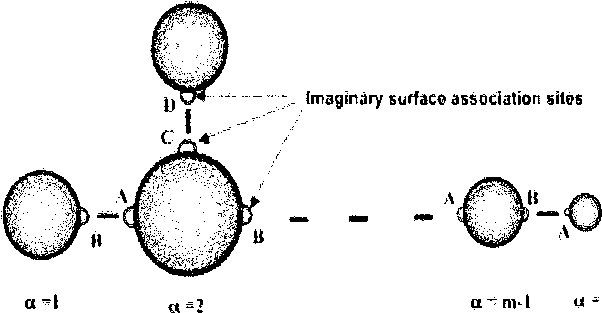3.6 Tripathi, Dominik and Chapman
Tripathi and Chapman [60] developed interfacial SAFT (or iSAFT) as an extension
of the first version of the density functional theory of Segura et. al. [62] for associating
fluids to polyatomic fluids. The excess free energy functional due to the formation
of chains is derived along similar lines as SAFT. Considering the polyatomic system
as a mixture of associating atomic fluids in the limit of complete association, the
free energy functional can be derived from Wertheim’s TPTl. The derivation of the
theory (for chains of m segments as shown in the figure 3.2) is briefly discussed below.

Figure 3.2: Schematic of the chain formed from m associating spheres.
The Helmholtz energy of a mixture of associating fluids can be written as
A∖pa] = Ai‰] + Aex^‰} + Aιsx'aaso‰] + AEX"att[pa],
where various contributions to the free energy functional are: Ald is the ideal gas free
(3.21)
74
More intriguing information
1. The name is absent2. Consumption Behaviour in Zambia: The Link to Poverty Alleviation?
3. How we might be able to understand the brain
4. The name is absent
5. Modelling the health related benefits of environmental policies - a CGE analysis for the eu countries with gem-e3
6. The name is absent
7. The name is absent
8. A Classical Probabilistic Computer Model of Consciousness
9. Housing Market in Malaga: An Application of the Hedonic Methodology
10. The name is absent